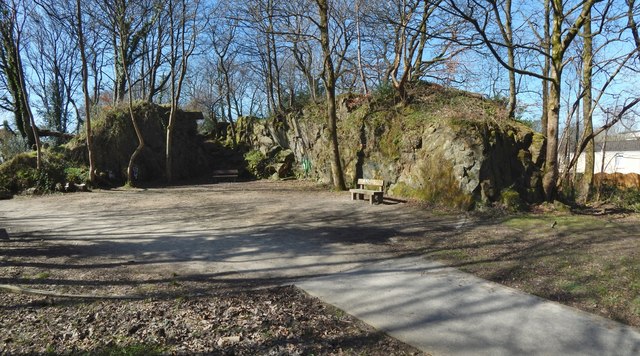Path through the old Rashielee Quarries
Introduction
The photograph on this page of Path through the old Rashielee Quarries by Lairich Rig as part of the Geograph project.
The Geograph project started in 2005 with the aim of publishing, organising and preserving representative images for every square kilometre of Great Britain, Ireland and the Isle of Man.
There are currently over 7.5m images from over 14,400 individuals and you can help contribute to the project by visiting https://www.geograph.org.uk

Image: © Lairich Rig Taken: 27 Mar 2017
A straight path (whose western part is shown entering at the bottom right of the picture) here runs parallel to the line of the former Rashielee Quarries; some of the rock faces of those quarries can be seen ahead. (For a view in the opposite direction from about the same place, showing another rock face, see Image See also Image, a continuation of that path.) They were described in the OS Name Books of 1856—57 as "an extensive whinstone quarry, the property of John Henderson Esq."; the 1895 revision of the map labels them "disused". John F Riddell, in his 1979 book "Clyde Navigation", mentions that the stone from the Rashielee workings was derived from the lava flows that make up the Renfrewshire Hills, and that it was used for, amongst other things, an extension made to Image "during the first decade of the nineteenth century", and to provide the facing of other training walls in the River Clyde, to protect the banks from erosion. In fact, as he says, the stone "was used throughout the river"; he also notes that "a quay was constructed at Rashielie so that the stone could be loaded into barges more easily", and that a length of wagonway connected the quay with the quarry. See also Image The wagonway itself can be seen on the first-edition map, surveyed in 1857. When the map was revised in 1895, the quarries were disused, and the track connecting them to the quay no longer existed, but map evidence of features related to that track lingered: specifically, the 1895 map shows some isolated cuttings; they were made during the formation of that track. Without knowledge of the former existence of the wagonway, the appearance of those cuttings on the map would be puzzling.

